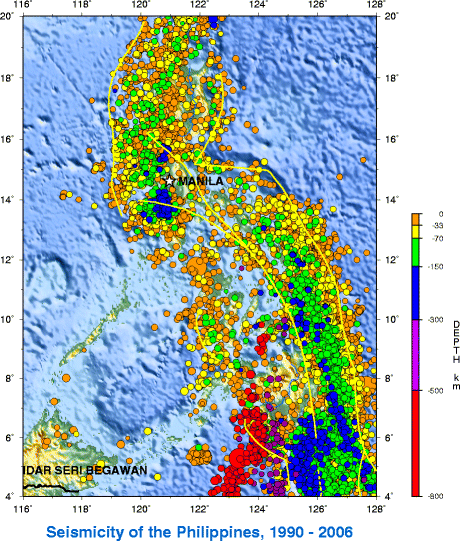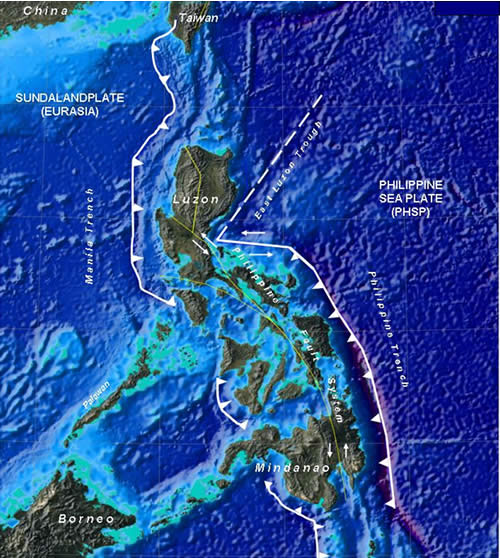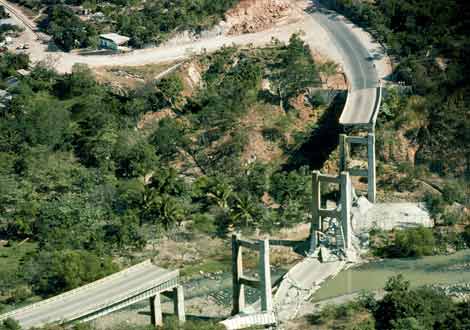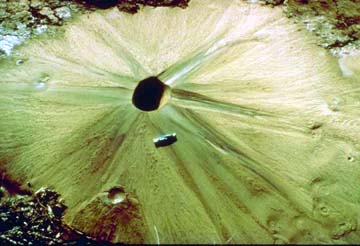An earthquake is the trembling or shaking of the ground caused by the result of a volcanic activity; it is when the movement of molten material and by gas pressure inside a volcano. An earthquake is also the breaking or slippage of large rock masses below or at the surface of the earth. It is when two crustal slide past each other, a fault or fracture in the rocks occur and because of too much stress, the rocks may snap or slip that this causes ground to shake.
- Types of Earthquakes
A violent earthquake is accompanied by many shocks that occur before or after the main shock. Foreshocks are tremors that occur before the main earthquake. Sometimes the main earthquake is preceded by only one foreshock. Aftershocks are tremors that occur after the main earthquake. They may happen for a few days or a few weeks. There are two types of earthquakes: Tectonic earthquakes are caused by movement in earth’s crust. Volcanic earthquakes are caused by the eruption of volcanoes.
- How are Earthquakes detected and observed
When an earthquake occurs, it generate waves. These waves, which are called seismic (earthquake) waves, radiate through the earth. The instrument to detect seismic waves is called a seismometer. A seismometer is attached to a recorder which produces a record of a seismic waves. The seismometer and the recorder together make up the seismograph. Seismologists (scientists who study earthquakes) study the seismic waves recorded by the seismograph to locate the epicenter of the earthquake. The epicenter is the point in the ground surface which is directly above the origin of the earthquake. The origin or focus of the earthquake is the point in the earth where the rock first break. Based on seismologists’ analysis of recorded seismic waves, the epicenter can be determined. Reports from places in which an earthquake is felt enable seismologists to determine its magnitude and intensity.
- Magnitude of an Earthquake
Magnitude is the amount of energy released by an earthquake. How is it measured? The most commonly used magnitude scale is the Richter Scale. This scale is based on the measurement of the amount of ground movements recorded by a seismograph at known distances from the epicenter of the earthquake. The Richter scale has no lower or upper limit. This is because there may be a lower or a higher magnitude than that already recorded.
- Intensity of an earthquake
Intensity is the measure of how strong an earthquake is felt in a specific place. An earthquake can have different intensities. If a place is nearer to the epicenter of an earthquake, people living there would experience strong shaking of the ground. If a place is farther away from the epicenter, people living there would experience mild or very little shaking of the ground. Intensity gives the measure of the degree of shaking based on damage to infrastructures, effects on people, plants and the land. The scale used in measuring intensity is the Rossi-Forel/Mercalli Scale.
- Places where earthquake occur
You have learned that the lithosphere is broken into several plates which float on the asthenosphere. Earthquakes occur at the plate boundaries where the edge of an oceanic plate goes down to the mantle. Earthquakes often occur in the Philippines. Why? Recall that the Philippines is within the Pacific Plate which is moving towards the Eurasian plate. There are many subduction zones between these two plates. Below is a map showing occurrences in the Philippines. The epicenters are located in places where there are active subduction zones. The active subduction zones are the Manila Trench, Philippine Trench, Cotabato Trench. Earthquake also appear along faults. The Philippine Fault Zone is active. Destructive earthquakes have also appeared along this zone. The Philippine Fault was formed when the Philippine Plate was compressed due to the collision of the Indo-Australian plate with the Pacific Plate and the Asiatic Plate millions of years ago.
The epicenters are located in places where there are active subduction zones. The active subduction zones are the Manila Trench, Philippine Trench, Cotabato Trench. Earthquake also appear along faults. The Philippine Fault Zone is active. Destructive earthquakes have also appeared along this zone. The Philippine Fault was formed when the Philippine Plate was compressed due to the collision of the Indo-Australian plate with the Pacific Plate and the Asiatic Plate millions of years ago.
- Effects of earthquakes
Earthquakes occur without warning so people are caught unaware and may suffer injury or death. Buildings, roads and bridges may be damaged by the strong shocks. Earthquakes can also cause other phenomena which can damage life, structures and the land.






Hi, this is a comment.
To delete a comment, just log in, and view the posts’ comments, there you will have the option to edit or delete them.